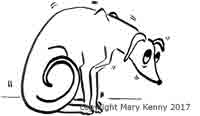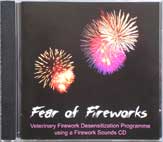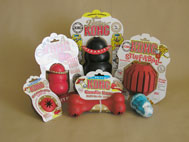How do I help my dog to not be scared of fireworks

If you know your dog is afraid - it can take a couple of months to work through a desensitisation and counter-conditioning program (see below). Starting early can really give you the time to turn your pet around. Product like Adaptil (DAP) and Desensitisation CD's can help if you want to work on your own. It can also help tremendously to get help from a qualified behaviourist who will be able to create a programme which will also work on several additional aspects to help to improve your dog's confidence and decrease their fear. You can also get a greater understanding of your dog's fireworks fear in this new Fireworks Fear booklet.
Is it too late? It’s never too late to implement at least some of the help in this note, but it's best to do the desensitisation programme when it's not dark in the evenings and there are no fireworks and bangs around. If there are only a few days to go to the fireworks events, then it would be best to visit your vet for help to calm your dog. And, there are also some new calming aids that can act very quickly - have a look at the Thundershirt - a specially designed coat that exerts constant gentle pressure on your dogs body; or the Pet Remedy Diffuser - a natural way to help your dog to be calm.
And, prevention for puppies - early exposure to lots of different sights, experiences, and sounds can really help prevent your puppy developing a fear of noises or fireworks - the CLIX, Noise desensitisation CD can be a great help towards that.
THE 7 Do’s on helping your dog cope with fireworks


Den - Create a safe, comfortable and quiet area for your pet. This should both hide the flashes and be able to quieten the noise. Get them well used to the area beforehand and teach them that it’s a good place to be. Really examine your house and take some time to think about this – from your pet’s point of view. Set up the area where they are likely to be most happy. Where is the quietest place? Could this actually be, or be set up to be, the normal family area? Perhaps they like to lie under the table and you could try covering the sides with a blanket? Or, try a covered crate or a large cardboard box, both filled with comfortable bedding, favourite toys or chews and some water. Make sure however, that they are free to come and go, and that the place is safe..
Dog Appeasing Pheromone and Calming Aids

Read about other calming aids here - herbals, dietary supplements etc.
D-Day
- Check that the den area is accessible, and prepared - this area will now be a happy safe place for your dog
- Make sure your dog has been to the toilet before hand.
- Feed them an hour before the event, adding a little extra carbs may fill them up and make them sleepy.
- If you can, set up some moderately loud rhythmic music in the room. Do, however, check that they like it beforehand, and turn it off if they seem more stressed.
- When the fireworks start, take them to the den area and encourage them to settle there.
- If your pet is seeking your assurance with pats or cuddles, then please do spend calm time with them. This is not teaching them to be scared, it's helping them by giving them everything we can to keep them calm. Later, however, it would be beneficial to work on helping them to cope on their own - gently of course - building things up gradually.
- If they don’t settle, try to distract them with a game or an easy training session, but don’t force this.
- Some pets have been known to find the most unusual place to seek comfort - under desks, in kitchen cabinets and even in the bath! Don’t be concerned about this, just work with your pet and help to make the place feel more secure.
Damage Limitation - Pets can be very unpredictable when highly stressed and they may well panic. Take extra safety precautions during this time. Make sure that they have no access to potentially dangerous items around the house, such as open fires or glass doors, or boiling water. Keep them on a lead or harness if you need to take them outside – at any time when a firework may go off.
Don’t Delay - The more you do the better here - and some pets do need more help than described above. Behaviour Therapy and training can help tremendously - especially if your pet is now scared of the dark too. Working with the problem holistically can really help, pulling together many aspects of the dogs life to build overall confidence and reduce factors which can cause internal or external distress. Any questions? Please call Pawsability, or find a behaviour therapist near you.
More notes on fireworks problems
Desensitisation - this is where your dog is carefully exposed to the fireworks noises at gradually increasing volume until such times as they do not re-act.
Counter conditioning happens after the desensitisation process and teaches the dog that the sounds actually mean good-things.
Why start in the summer? The whole process will work far more effectively if the desensitisation and counter-conditioning processes occurs when there is no likelyhood of the dog being exposed to these noises or other aspects of their fear, such as dark nights.
Follow the links to read more below.
Want all the science on canine fears and phobias? Have a look here at the BLOG by Robert Falconer-Taylor - Pets, Fears and Fireworks